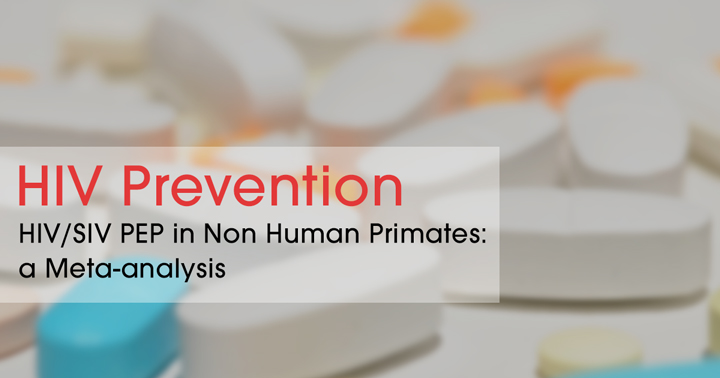Animals have long been the most faithful friends of humans but what is more interesting to know is that they have been a model for scientific experimentation which helps humans to make better medication and cure. A recently published meta-analysis report by the team of Irvine C. in the journal “Clinical Infectious Diseases”, the authors have admirably gathered the data published since May 2004 on the efficacy of HIV Post-exposure Prophylaxis (PEP).
The efficacy of PEP in humans was first published in 1997 in a case report. As there are ethical limitations in human subjects, animal models play a vital role in the clinical trials and research. Therefore, there are more studies on animal models and this analysis was done one data published on nonhuman primates.
The meta-analysis was done on more than 2000 papers published in medical web portals like Pubmed, Web of Science and Embase on nonhuman primates. Out of the 2517 papers and abstracts searched and found on HIV PEP, 2238 papers were excluded. 247 were duplicates which were also excluded. Out of the 40 remaining full articles, only 25 were finally selected because only these 25 papers had at least one animal which converted from being uninfected to seropositive and was given at least one antiretroviral medication. To have a more accurate analysis, the data was extracted by two different authors of the paper, simultaneously. The selection criteria were:
- publication which were from peer reviewed journals
- had controls
- randomization to treatment
- sample size was calculated
- statement of compliance and statement related to conflicts of interests.
This meta-analysis was conducted according to protocol following the requirements set by the Preferred Reporting Items for Systemic Reviews and Meta-analysis (PRISMA).
Most of the animals which were studied in these reports were rhesus macaques or cynomolgus monkeys. Out of the total 408 primates studied, 180 were the infected animals versus 103 controls. The simian immunodeficiency virus (SIV) or Human Immunodeficiency virus (HIV) were administered to animals primarily via an intravenous route while the PEP drug/drugs were given subcutaneously. Interestingly, the animals which were on PEP were at an 89% lower risk of becoming seropositive.
The report also shows that the earlier the PEP is started the lower the rate of seroconversion. While there was no significant difference in the type of the antiretroviral medication given, there was a lower percentage of the seroconversion in the animals treated with tenofovir when compared with other drugs.
Another thing of interest with the figures was that older studies showed less efficacy of the drugs while more recent studies favored PEP.
After the authors collected and reviewed the data from previously reported papers, they emphasized that there is a need for better publications and research on the efficacy of PEP in nonhuman primates.
This meta-analysis, as a final point, emphasizes on the efficaciousness of earlier start in the application of antiretroviral PEP medications after exposure to HIV.
Source:
Irvine C et al. Efficacy of HIV Postexposure Prophylaxis: Systemic Review and Meta-analysis of Nonhuman Primate Studies. Clinical Infectious Diseases. 2015

